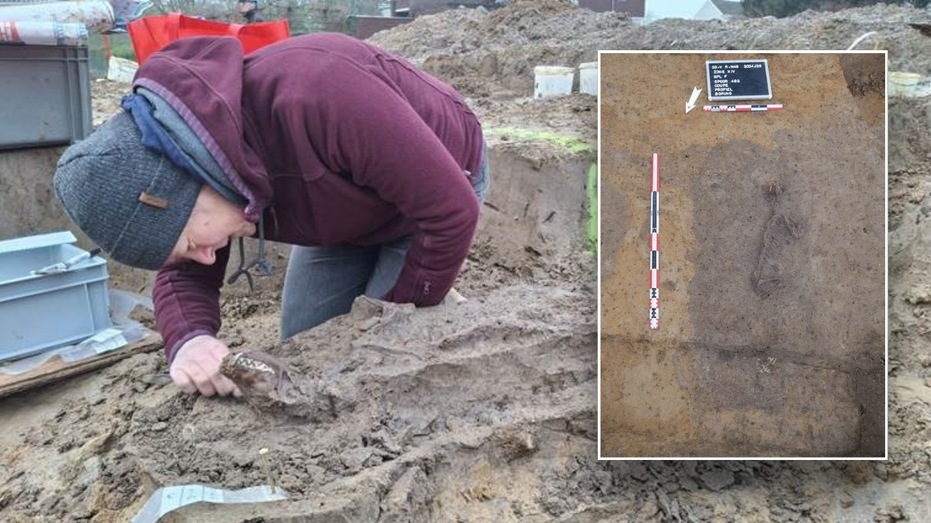Ancient Settlement Reveals Remains of 1,800-Year-Old Dog, Baffling Experts: 'Preserved Quite Well'

Sarah Johnson
April 7, 2025
Brief
Archaeologists in Belgium have uncovered a remarkably preserved 1,800-year-old Roman dog sacrifice, shedding new light on ancient ritualistic land purification practices and Roman-era village life.
Archaeologists have unearthed the remarkably well-preserved remains of a dog dating back 1,800 years in Velzeke, a village in Belgium. The discovery shines a spotlight on the ritualistic practices of ancient Rome, leaving experts both fascinated and puzzled.
The excavation, led by SOLVA Archaeology Service, revealed the skeletal remains beneath a stone floor, which acted as a natural preservative. Arne Verbrugge, an archaeologist from Flanders, explained that bone preservation in the region is usually poor, but the calcareous sandstone foundation worked its magic here. And yes, the dog's teeth are still intact—talk about dental diligence from centuries ago!
Unlike dogs sacrificed to accompany deceased humans to the afterlife—a common Roman practice—this canine appears to have been offered as a sacrifice to purify land before constructing a building. According to Roman scholar Varro's 'De Re Rustica,' dogs were occasionally used in purification rituals, a practice tied to land and house cleansing.
Verbrugge pointed out that sacrificing dogs during Roman festivals, like Lupercalia, honored fertility and purification deities. However, finding a building-related dog sacrifice in Flanders is a first, though similar discoveries have been made in France and the UK.
The building itself, likely significant, had stone foundations—a rarity for the region during the Roman era. Such structures were typically reserved for villas, public buildings, or sites with military, administrative, or religious importance.
While the dog's breed remains a mystery, further analysis of the bones might reveal details like age, gender, and cause of death. As Verbrugge noted, breed distinctions are a fairly modern concept, so don't expect anyone to name this timeless pup a Roman Labrador.
Other artifacts uncovered at the site include the bones of another dog, a young pig, dozens of drinking cups, and even a bronze bowl. However, these finds are thought to be settlement waste rather than ceremonial offerings. The presence of luxury pottery, jewelry, and silver coins indicates the site had a rich culture, while slag and oven fragments suggest nearby artisanal activities.
All in all, this excavation paints a vivid picture of Roman life, blending rituals, craftsmanship, and a touch of mystery. And let’s be honest—how many ancient sites give us a peek into canine history like this?
Topics
Editor's Comments
Okay, so sacrificing dogs for purification? That’s an odd mix of superstition and construction planning. But hey, the Romans weren’t ones for half measures when it came to rituals. Also, the fact that the dog could be linked to a building rather than a grave—now that’s a plot twist worthy of a historical drama!
Like this article? Share it with your friends!
If you find this article interesting, feel free to share it with your friends!
Thank you for your support! Sharing is the greatest encouragement for us.



